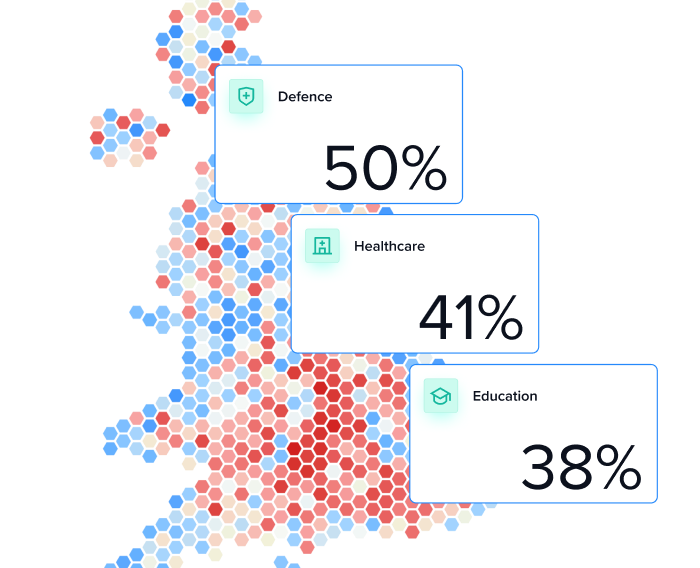Blog/Polling
Poll results: Kamala Harris gets Sun Belt boost
With fieldwork conducted on either side of the debate, we ran eight separate surveys with a total of 8,678 respondents across eight states: Arizona, Georgia, Michigan, Nevada, North Carolina, Ohio, Pennsylvania and Wisconsin.
Most swing states remain firmly inside the margin of error, however, making the presidential race still too close to call.
Our modelling based on the dates each respondent took the survey suggests that this month’s debate led to a 2.1-point average increase in Harris’ vote share across the Sun Belt states we polled (Arizona, Georgia, Nevada and North Carolina). This compares to a barely perceptible 0.4-point increase in the Rust Belt states (Michigan, Ohio, Pennsylvania and Wisconsin).
You can find a full breakdown of the results in the data tables here.

MRP results
The polls tally with the latest results of our MRP model, which can be revealed exclusively here. MRP (multi-level regression with post-stratification) is a statistical technique for estimating public opinion in small geographic areas or sub-groups using national opinion surveys. We deployed an MRP model to great success in the recent UK general election and have taken our expertise across the Atlantic for this election.
If the state polls were exactly right, Kamala Harris would win the Electoral College with 303 electoral votes and no states changing hands since 2020. Our MRP model would point to an even closer race, with Trump edging it 270–268. The state polls and MRP align very closely, with minor disagreement in a couple of states.

If we allocate each state to the leading candidate across both methods, we find Kamala Harris on 268 electoral votes to Donald Trump’s 235, with the two methods having different leaders in Georgia and Pennsylvania – worth a total of 35 electoral votes. A win in either state would take Harris over the line, whereas Trump would have to win both states to eke out a victory with 270 electoral votes.
While the traditional polls and MRP model produce very similar results, using multiple methods to assess the state of the race gives us a more rigorous approach and allows us to balance out the potential deficiencies with each method.
Methodological differences
While state polls rely on samples of around 1,000 in each state, our MRP model has a ‘mega sample’ of over 20,000 voters nationally. One of the key advantages of MRP is that it makes use of data across the country to predict levels of support in each individual state. If a poll does not have many respondents from rural Pennsylvania for example, MRP can learn from the behaviour of similar respondents in similar states to make an informed estimate of how rural Pennsylvanians might vote, while retaining specific state-level effects. The modelling inherent to MRP makes it more immune to wild swings in polling merely caused by who does and does not respond to a survey (known in the industry as non-response bias).
On the other hand, this introduces an element of synthetic-ness to the MRP data, so having regular polling conducted alongside it, in which all respondents come from the particular state in question, can provide a good sense check of the results.
Many pollsters in the US do not weight their data to known past vote distributions and those conducted online end up with panel skews of too many young Republicans and old Democrats, or too many moderate, suburban Republicans and not enough MAGA ones. In turn, this can mean the types of Republicans who respond to surveys are more likely to change their vote or not turn out than the typical Republican, which can have the effect of underestimating Donald Trump (as the polls have done at the last two presidential elections).
Both our swing state polls and MRP model use known distributions of population density and past vote, interlocked with variables such as age, race and education, to make sure our respondents match the overall population and we get the right kinds of Republicans in the right places.
We have been concerned about the sources of polling error among US pollsters over the last ten years, and have taken time to address it. We believe that viewing the race using both traditional polling and MRP modelling is the best way to get a clear view of the overall electoral picture.
The minor disagreement between the two methods in the key battleground states of Georgia and Pennsylvania suggests that the country currently remains on course for one of the closest presidential elections in decades.

Image of Kamala Harris and Tim Walz by Gage Skidmore


